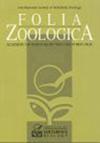易地圈养大熊猫的生境利用及放生保真度
Q2 Agricultural and Biological Sciences
引用次数: 0
摘要
摘要易位生物在释放后对新环境的行为适应(运动和栖息地利用)在易位计划中至关重要,因为它可能影响生存。因此,确定决定迁移动物栖息地选择的因素对于改善规划和此类计划的结果至关重要。利用3只迁徙大熊猫(Ailuropoda melanoleuca)的数据,研究了迁徙大熊猫的栖息地利用、放生地点保真度以及与定居大熊猫的互动关系。结果表明:迁入大熊猫的栖息地质量显著高于研究区平均水平,显著低于留居大熊猫的栖息地质量。这表明放归的三只大熊猫具有选择栖息地的能力。这三只被放生的大熊猫逐渐离开了它们的放生地点,并没有表现出对放生地点的忠诚。在最初的6个月里,大熊猫待在离放养地3公里以内的地方,那里的栖息地质量很好,但与大熊猫的分布重叠。6个月后,当被放生的大熊猫离开放生地点时,放生大熊猫和常驻大熊猫的位置重叠减少了。本文章由计算机程序翻译,如有差异,请以英文原文为准。
Habitat utilization and release-site fidelity of translocated captive-bred giant pandas (Ailuropoda melanoleuca)
Abstract. The behavioural adaptation (movement and habitat utilization) of translocated organisms to a new environment after their release is crucial in translocation programs because it may affect survival. Therefore, identifying the factors determining habitat selection by the relocated animals is essential to improving the planning and the outcome of such programs. Using the data from three relocated giant pandas (Ailuropoda melanoleuca), we studied the habitat utilization, release-site fidelity, and interaction with resident giant pandas. The results showed that the quality of habitat used by the relocated giant pandas was significantly higher than the average habitat quality of the research region, and was significantly lower than that used by resident giant pandas. This suggested that the released three giant pandas had habitat selection abilities. The three released giant pandas gradually moved away from their release sites and did not exhibit site fidelity. In the first six months, the giant pandas stayed within about 3 km of their release sites, where habitat was good quality but overlapped with the distribution of resident giant pandas. The overlap of location between released and resident giant pandas decreased after six months when the released giant pandas moved away from their release sites.
求助全文
通过发布文献求助,成功后即可免费获取论文全文。
去求助
来源期刊

Folia Zoologica
生物-动物学
CiteScore
1.70
自引率
0.00%
发文量
0
审稿时长
3 months
期刊介绍:
Information not localized
 求助内容:
求助内容: 应助结果提醒方式:
应助结果提醒方式:


